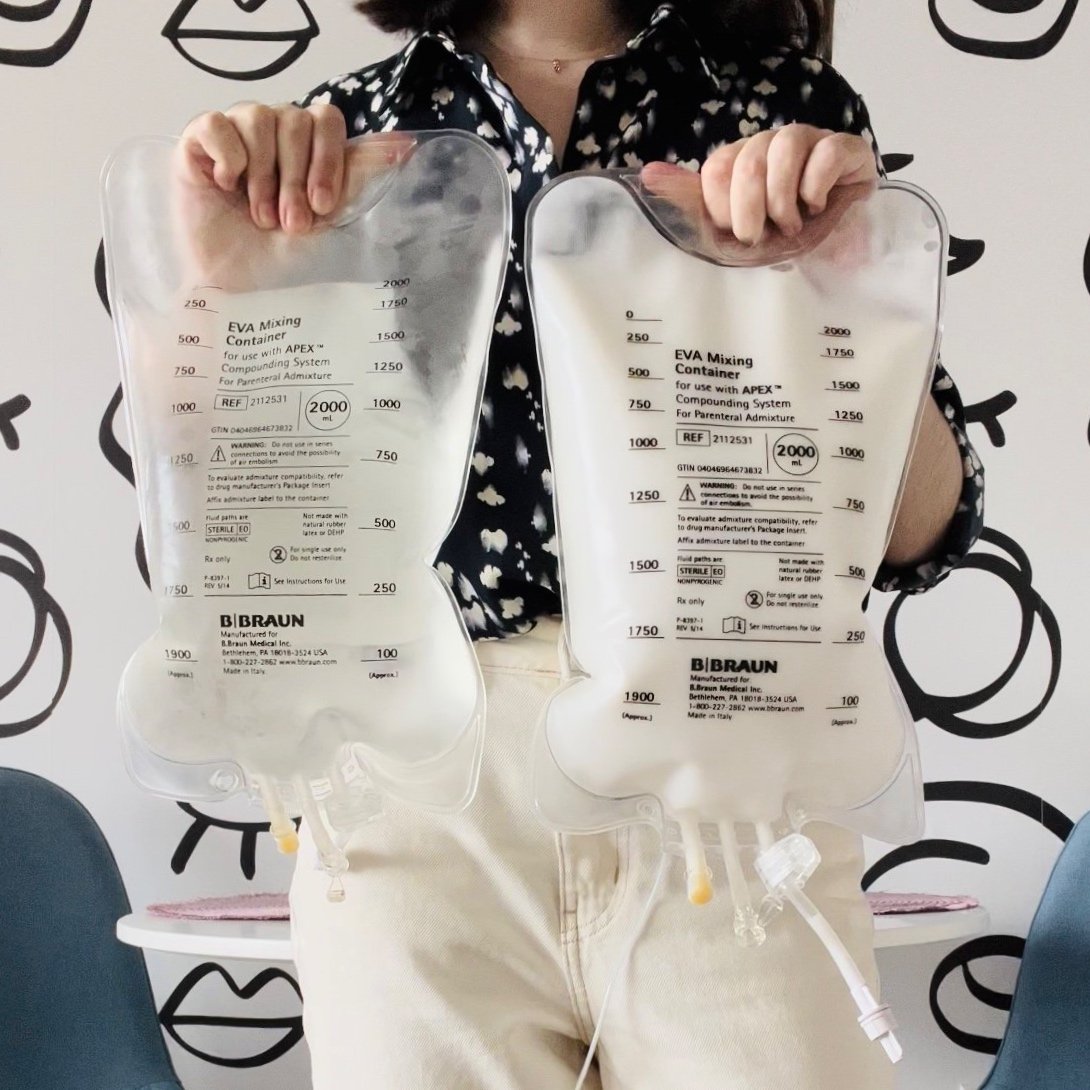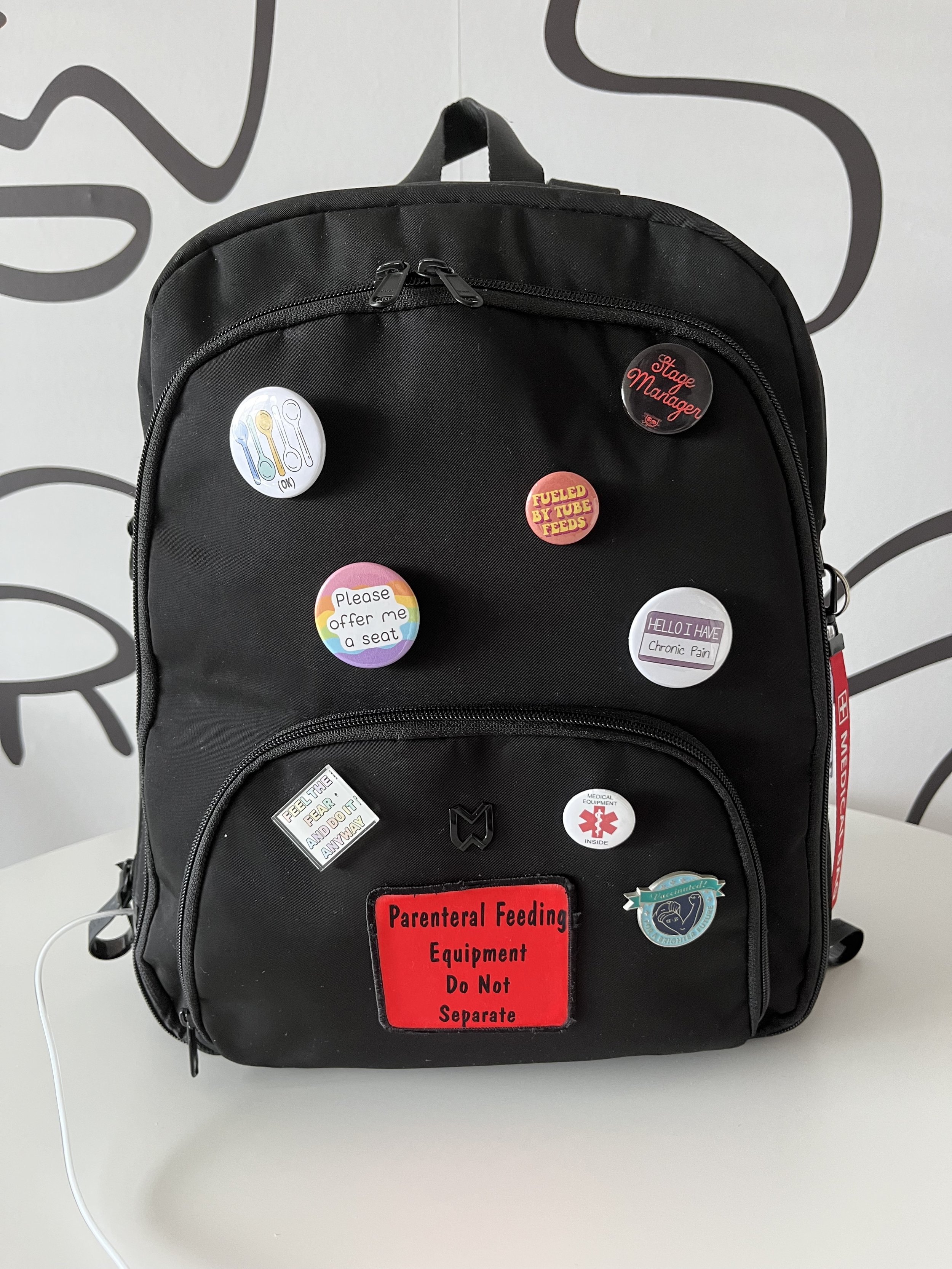All About Total Parenteral Nutrition (TPN)
-
• Total Parenteral Nutrition (TPN) is a medication in the form of a fluid that is used for the management and treatment of malnourishment (1).
• TPN is a method of feeding that bypasses the gastrointestinal tract and provides complete nutrition through the vein (2).
** TPN is typically a last resort medication.
Sources:
(1) https://pubmed.ncbi.nlm.nih.gov/32644462/
(2) https://medlineplus.gov/ency/patientinstructions/000177.htm#start
-
• TPN has three main components: lipid emulsions (fats), proteins, and dextrose (sugars). Aside from these main components the rest of the TPN is made based on the patients nutritional needs (1).
Sources:
-
• TPN is most commonly used by those who have Crohn’s, cancer, short bowel disease, and/or ischemic bowel disease (1).
• Also used by critically ill patients who cannot be fed through the enteral route (ex. NG, GJ, peg, etc.) (2).
• Again, this does not include all patient types, but the most common ones.
**TPN is a last resort (3).
Sources:
(1) https://sansimeonbythesound.org/2020/08/14/total-parenteral-nutrition-at-san-simeon-by-the-sound/
(2) https://www.ncbi.nlm.nih.gov/pmc/articles/PMC5529889/
(3) https://academic.oup.com/ajcn/article/100/4/1102/4576487
-
TYPES OF CATHETERS (1):
• PICC Line: Peripheral Inserted Central Catheter; a tube inserted into the upper arm and threaded into a large vein and ends in the superior vena cava of the heart. Used if you need frequent needle pricks for blood draws or medication (2). They can have multiple lumens hanging outside the body to use to administer medication or be accessed for blood draws. Typically a person can have 1-3 lumens.
• Central Line: Central Venous Catheters (usually a tunneled CVC)(1); a tubed inserted into a large vein below the collarbone and threaded into a large vein and ends in the superior vena cava of the heart (this is one of many ways it can be inserted). Used for more long term patients who need intravenous fluids, blood transfusions, chemotherapy, and/or other drugs (3). Common tunneled CVC brands are Hickman and Broviac(4). They can have multiple lumens hanging outside the body to use to administer medication or be accessed for blood draws. Typically a person can have 1-3 lumens.
**Long term TPN patients can be switched from PICC lines to Central lines because thrombophlebitis can develop over time in peripheral veins as compared to central veins (5).
• Port-A-Cath/ Implanted Ports: An implanted port is placed under the skin and accessed by poking a needle through the skin into the port. Used to deliver medications but not very frequently (not daily) (6). Since they are underneath the skin, they aren’t very visible (unless being accessed) and do not have lumens hanging outside the body.
Sources:
(1) https://www.verywellhealth.com/what-is-a-central-venous-catheter-cvc-2252535
(2) https://my.clevelandclinic.org/health/treatments/14983-peripherally-inserted-central-catheter-picc
(4) https://www.mskcc.org/cancer-care/patient-education/about-your-tunneled-catheter
(5) https://pubmed.ncbi.nlm.nih.gov/8289417/
(6) https://www.verywellhealth.com/what-is-a-central-venous-catheter-cvc-2252535
-
• Patients on TPN are at a high risk of a bloodstream infections (1). This can lead to sepsis which can lead to death (2).
• Patients with line infections are admitted immediately as inpatients and started on antibiotics as their condition is closely assessed.
• Alongside bloodstream infection risk, there are many other complications that are just as dangerous (mentioned in ‘complications’ tab).
Sources:
-
• TPN can cause a variety of complications however, much of this depends on the patient; everyone has different bodies, lifestyles, conditions, symptoms, duration on TPN, etc. so these are just some of the most common complications among TPN patients.
COMMON COMPLICATIONS:
• Refeeding Syndrome (1)
• Hyperglycemia or Hypoglycemia (2,3)
• Infection (see ‘risks’ tab)
• Procedure Risks (4)
• Thrombosis (blood clots) (4)
• Electrolyte and/or Dehydration Imbalances (4)
• Micronutrient Deficiencies (4)
• Liver Dysfunction, Diseases, and/or Failure (5)
• Hepatic Steatosis (5)
• Gallbladder and Bile Duct Damage (5)
• Cholestasis (5)
Sources:
(1) https://www.ncbi.nlm.nih.gov/pmc/articles/PMC2440847/
(2) https://www.ncbi.nlm.nih.gov/pmc/articles/PMC2556767/
(3) https://pubmed.ncbi.nlm.nih.gov/25441588/
(5) https://www.sciencedirect.com/topics/medicine-and-dentistry/total-parenteral-nutrition
-
• It depends on the patient and their condition!
• Depending on the medical condition, a person may or may not be able to eat, digest, swallow, etc.
• TPN is typically used when a patient’s daily caloric intake is not sufficient enough for them to survive.
• Commonly, a patient will be put on a ‘failure to thrive’ (AFTT or FTT dependent on age) due to malnutrition which means the patient is significantly declining in health (whether that be weight, movement, etc.) below that of others their age (1).
Sources:
(1) https://www.hopkinsmedicine.org/health/conditions-and-diseases/failure-to-thrive
-
Here are some more resources to find more info on TPN:
• The Oley Foundation - A great resource for those on Home Enteral Nutrition (HEN) and/or Home Parenteral Nutrition (HPN).
• American Society for Parenteral and Enteral Nutrition (ASPEN) - Gives patients and caregivers information about nutrition support for both enteral and parenteral nutrition.
• Academy of Nutrition and Dietetics - Gives information and research on nutrition and nutrition issues.
• Association of Gastrointestinal Motility Disorders (AGMD) - A nonprofit organization focusing on digestive motility diseases and disorders.
• Coram Specialty Infusion Services- Coram, one of the USA’s home IV specialty programs through CVS Pharmacy. I personally use Coram and couldn’t be happier with their services!
• MightyWell - As I’ve mentioned throughout my site, I’ve used their PICC sleeves and also use their infusion backpack for my TPN.



